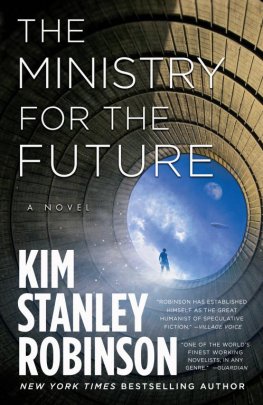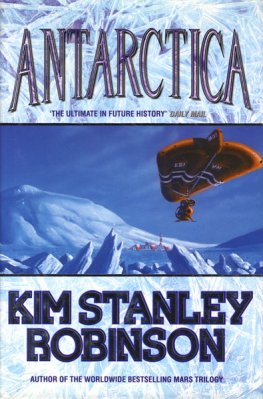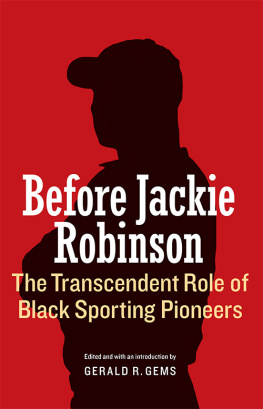Kim Robinson - 2312
Here you can read online Kim Robinson - 2312 full text of the book (entire story) in english for free. Download pdf and epub, get meaning, cover and reviews about this ebook. genre: Science fiction. Description of the work, (preface) as well as reviews are available. Best literature library LitArk.com created for fans of good reading and offers a wide selection of genres:
Romance novel
Science fiction
Adventure
Detective
Science
History
Home and family
Prose
Art
Politics
Computer
Non-fiction
Religion
Business
Children
Humor
Choose a favorite category and find really read worthwhile books. Enjoy immersion in the world of imagination, feel the emotions of the characters or learn something new for yourself, make an fascinating discovery.

- Book:2312
- Author:
- Genre:
- Rating:4 / 5
- Favourites:Add to favourites
- Your mark:
- 80
- 1
- 2
- 3
- 4
- 5
2312: summary, description and annotation
We offer to read an annotation, description, summary or preface (depends on what the author of the book "2312" wrote himself). If you haven't found the necessary information about the book — write in the comments, we will try to find it.
2312 — read online for free the complete book (whole text) full work
Below is the text of the book, divided by pages. System saving the place of the last page read, allows you to conveniently read the book "2312" online for free, without having to search again every time where you left off. Put a bookmark, and you can go to the page where you finished reading at any time.
Font size:
Interval:
Bookmark:
Kim Stanley Robinson
2312
Prologue
The sun is always just about to rise. Mercury rotates so slowly that you can walk fast enough over its rocky surface to stay ahead of the dawn; and so many people do. Many have made this a way of life. They walk roughly westward, staying always ahead of the stupendous day. Some of them hurry from location to location, pausing to look in cracks they earlier inoculated with bioleaching metallophytes, quickly scraping free any accumulated residues of gold or tungsten or uranium. But most of them are out there to catch glimpses of the sun.
Mercurys ancient face is so battered and irregular that the planets terminator, the zone of the breaking dawn, is a broad chiaroscuro of black and white-charcoal hollows pricked here and there by brilliant white high points, which grow and grow until all the land is as bright as molten glass, and the long day begun. This mixed zone of sun and shadow is often as much as thirty kilometers wide, even though on a level plain the horizon is only a few kilometers off. But so little of Mercury is level. All the old bangs are still there, and some long cliffs from when the planet first cooled and shrank. In a landscape so rumpled the light can suddenly jump the eastern horizon and leap west to strike some distant prominence. Everyone walking the land has to attend to this possibility, know when and where the longest sunreaches occur-and where they can run for shade if they happen to be caught out.
Or if they stay on purpose. Because many of them pause in their walkabouts on certain cliffs and crater rims, at places marked by stupas, cairns, petroglyphs, inuksuit, mirrors, walls, goldsworthies. The sunwalkers stand by these, facing east, waiting.
The horizon they watch is black space over black rock. The superthin neon-argon atmosphere, created by sunlight smashing rock, holds only the faintest predawn glow. But the sunwalkers know the time, so they wait and watch-until- a flick of orange fire dolphins over the horizon and their blood leaps inside them. More brief banners follow, flicking up, arcing in loops, breaking off and floating free in the sky. Star oh star, about to break on them! Already their faceplates have darkened and polarized to protect their eyes.
The orange banners diverge left and right from the point of first appearance, as if a fire set just over the horizon is spreading north and south. Then a paring of the photosphere, the actual surface of the sun, blinks and stays, spills slowly to the sides. Depending on the filters deployed in ones faceplate, the stars actual surface can appear as anything from a blue maelstrom to an orange pulsing mass to a simple white circle. The spill to left and right keeps spreading, farther than seems possible, until it is very obvious one stands on a pebble next to a star.
Time to turn and run! But by the time some of the sunwalkers manage to jerk themselves free, they are stunned-trip and fall-get up and dash west, in a panic like no other.
Before that-one last look at sunrise on Mercury. In the ultraviolet its a perpetual blue snarl of hot and hotter. With the disk of the photosphere blacked out, the fantastic dance of the corona becomes clearer, all the magnetized arcs and short circuits, the masses of burning hydrogen pitched out at the night. Alternatively you can block the corona, and look only at the suns photosphere, and even magnify your view of it, until the burning tops of the convection cells are revealed in their squiggling thousands, each a thunderhead of fire burning furiously, all together torching five million tons of hydrogen a second-at which rate the star will burn another four billion years. All these long spicules of flame dance in circular patterns around the little black circles that are the sunspots-shifting whirlpools in the storms of burning. Masses of spicules flow together like kelp beds threshed by a tide. There are nonbiological explanations for all this convoluted motion-different gases moving at different speeds, magnetic fields fluxing constantly, shaping the endless whirlpools of fire-all mere physics, nothing more-but in fact it looks alive, more alive than many a living thing. Looking at it in the apocalypse of the Mercurial dawn, its impossible to believe its not alive. It roars in your ears, it speaks to you.
Most of the sunwalkers over time try all the various viewing filters, and then make choices to suit themselves. Particular filters or sequences of filters become forms of worship, rituals either personal or shared. Its very easy to get lost in these rituals; as the sunwalkers stand on their points and watch, its not uncommon for devotees to become entranced by something in the sight, some pattern never seen before, something in the pulse and flow that snags the mind; suddenly the sizzle of the fiery cilia becomes audible, a turbulent roaring-thats your own blood, rushing through your ears, but in those moments it sounds just like the sun burning. And so people stay too long. Some have their retinas burned; some are blinded; others are killed outright, betrayed by an overwhelmed spacesuit. Some are cooked in groups of a dozen or more.
Do you imagine they must have been fools? Do you think you would never make such a mistake? Dont you be so sure. Really you have no idea. Its like nothing youve ever seen. You may think you are inured, that nothing outside the mind can really interest you anymore, as sophisticated and knowledgeable as you are. But you would be wrong. You are a creature of the sun. The beauty and terror of it seen from so close can empty any mind, thrust anyone into a trance. Its like seeing the face of God, some people say, and it is true that the sun powers all living creatures in the solar system, and in that sense is our god. The sight of it can strike thought clean out of your head. People seek it out precisely for that.
S o there is reason to worry about Swan Er Hong, a person more inclined than most to try things just to see. She often goes sunwalking, and when she does she skirts the edge of safety, and sometimes stays too long in the light. The immense Jacobs ladders, the granulated pulsing, the spicules flowing she has fallen in love with the sun. She worships it; she keeps a shrine to Sol Invictus in her room, performs the pratahsamdhya ceremony, the salute to the sun, every morning when she wakes in town. Much of her landscape and performance art is devoted to it, and these days she spends most of her time making goldsworthies and abramovics on the land and her body. So the sun is part of her art.
Now it is her solace too, for she is out there grieving. Now, if one were standing on the promenade topping the city Terminators great Dawn Wall, one would spot her there to the south, out near the horizon. She needs to hurry. The city is gliding on its tracks across the bottom of a giant dimple between Hesiod and Kurasawa, and a flood of sunlight will soon pour far to the west. Swan needs to get into town before that happens, yet she still stands there. From the top of the Dawn Wall she looks like a silver toy. Her spacesuit has a big round clear helmet. Her boots look big, and are black with dust. A little booted silver ant, standing there grieving when she should be hustling back to the boarding platform west of town. The other sunwalkers out there are already hustling back to town. Some pull little carts or wheeled travois, hauling their supplies or even their sleeping companions. Theyve timed their returns closely, as the city is very predictable. It cannot deviate from its schedule; the heat of coming day expands the tracks, and the citys undercarriage is tightly sleeved over them; so sunlight drives the city west.
The returning sunwalkers crowd onto the loading platform as the city nears it. Some have been out for weeks, or even the months it would take to make a full circumambulation. When the city slides by, its lock doors will open and they will step right in.
Font size:
Interval:
Bookmark:
Similar books «2312»
Look at similar books to 2312. We have selected literature similar in name and meaning in the hope of providing readers with more options to find new, interesting, not yet read works.
Discussion, reviews of the book 2312 and just readers' own opinions. Leave your comments, write what you think about the work, its meaning or the main characters. Specify what exactly you liked and what you didn't like, and why you think so.














